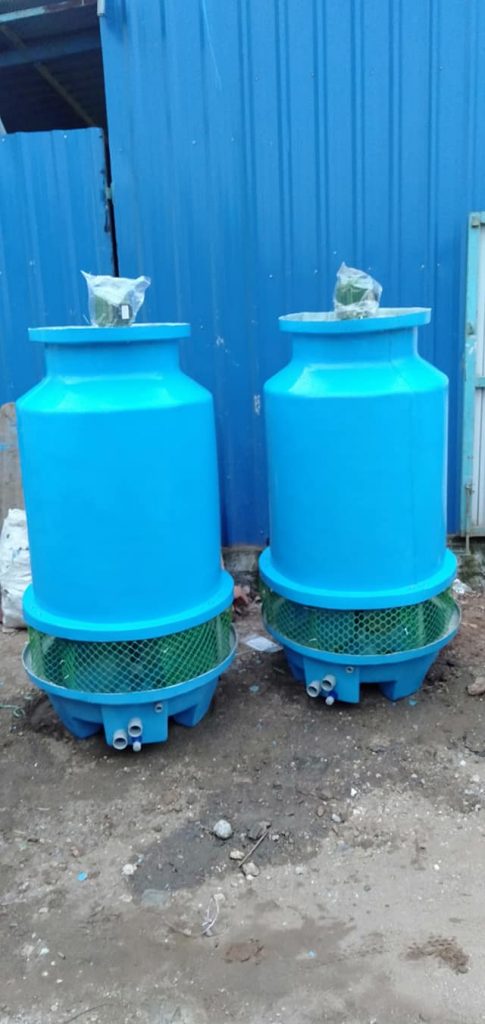| Cooling Tower Fan Drive Types Cooling tower fans are critical for airflow generation, and their drive systems impact efficiency, maintenance, and operational flexibility. The main types of fan drives include: 1. Belt-Driven Fans Mechanism: Uses belts (V-belts or synchronous cogged belts) and pulleys to transfer power from the motor to the fan. Advantages: Lower initial cost. Easy speed adjustment by changing pulley ratios. Reduces motor vibration transmission. Disadvantages: Requires regular belt tensioning and replacement. Slippage can reduce efficiency (~3–5% energy loss). Best For: Small to medium cooling towers with stable loads. 2. Direct-Driven (Direct-Coupled) Fans Mechanism: Fan is mounted directly on the motor shaft (no belts/gears). Advantages: High efficiency (no transmission losses). Low maintenance (no belts or gears). Disadvantages: Motor must match fan speed (no flexibility without VFD). Higher motor cost (specialized designs). Best For: Compact cooling towers, high-efficiency applications. 3. Gear-Driven Fans Mechanism: Uses a gearbox to reduce motor speed and increase torque. Advantages: Allows high-torque, low-speed fan operation. Suitable for very large fans (e.g., field-erected towers). Disadvantages: Gear maintenance (lubrication, wear monitoring). Energy losses (~2–8% depending on gear type). Best For: Heavy-duty industrial cooling towers. 4. Variable Frequency Drive (VFD) Controlled Fans Mechanism: Uses an electronic VFD to adjust motor speed. Advantages: Energy savings (fan laws: Power ∝ Speed³). Soft starts reduce mechanical stress. Precise speed control for varying loads. Disadvantages: Higher upfront cost. Requires proper electrical setup (harmonic filters may be needed). Best For: Cooling towers with variable loads (e.g., HVAC, data centres). 5. Electronically Commutated (EC) Motor Fans Mechanism: Brushless DC motors with integrated speed control. Advantages: High efficiency (up to 90+%). Built-in speed control (no separate VFD needed). Quiet operation. Disadvantages: Higher initial cost than AC motors. Limited to smaller/medium-sized fans. Best For: Modern HVAC systems, energy-efficient retrofits. |
Cooling Tower Manufacturer in India
